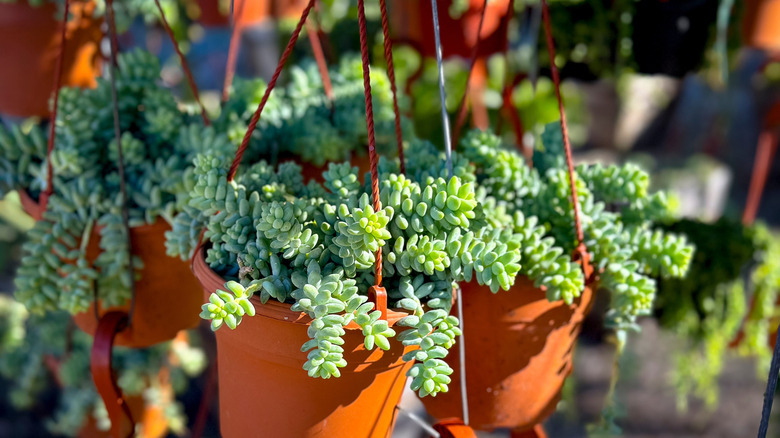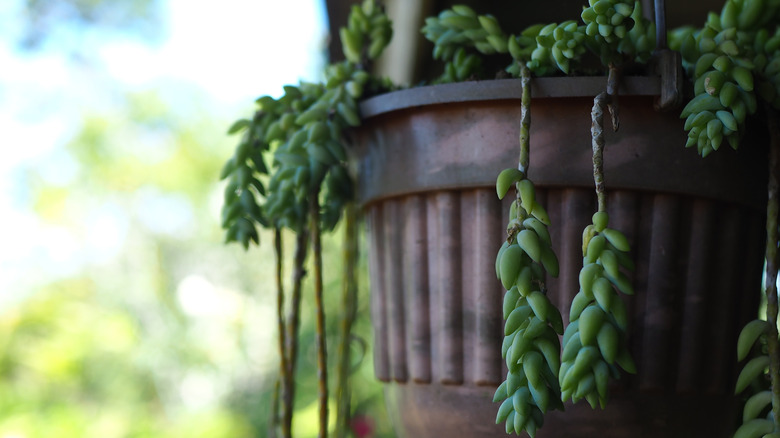The Watering Tip That'll Help Prevent The Burro's Tail From Losing Its Leaves
Do you find the leaves of your burro's tail (Sedum morganianum) scattered on the floor anytime you brush by it? That's not abnormal. It propagates by dropping leaves to root in the surrounding soil. However, if you see a sudden uptick in how often, or how many, leaves are falling off, you might have a problem. While many succulent leaves turn yellow when in distress, burro's tail starts dropping leaves when it isn't getting what it needs. And the culprit is likely too much water, so it's time to let the plant dry out and change up your watering routine.
If you've been overwatering your burro's tail there will be evidence of root rot and weak stems. When the plant is actively growing, usually in the summer, it can tolerate more frequent watering. Every two weeks should be enough, but insert your finger up to your first knuckle to check the soil's moisture. It should be dry before you water. In the dormant season it should be watered even more sparingly. For many indoor burro's tails, you may not need to water any more than once per month. Erring on the side of underwatering rather than overwatering is usually a good bet. So, if you're a forgetful waterer, and you don't already have one, you may want to add burro's tail to the other low-maintenance indoor succulent plants in your collection.
More tips for keeping your burro's tail happy
Perfecting your watering routine is crucial to having a healthy burro's tail, but it's not the only thing you will want to consider changing if you are seeing more leaves drop than normal. Soil is also key to ensuring any succulent stays healthy. A cactus or succulent soil mix is crucial to ensuring your plant does not sit in wet soil. Additionally, you will want to make sure your plant doesn't sit in standing water. So, if there is water collecting in the drip plate, dump it.
If none of this works, it's possible you have a different problem. You can, in fact, underwater a burro's tail. It will shed leaves to conserve water if it doesn't get enough moisture, so if there is no evidence of root rot, too little water might be the real problem. You will need to water your burro's tail deeply over the course of a few weeks, ensuring it drains easily and that it doesn't sit in standing water.
Caring for succulents inside, and outside, of your house can be tricky. Finding the delicate balance between too much and too little water is essential. Sometimes, a little trial and error is needed before you finally find the sweet spot.

